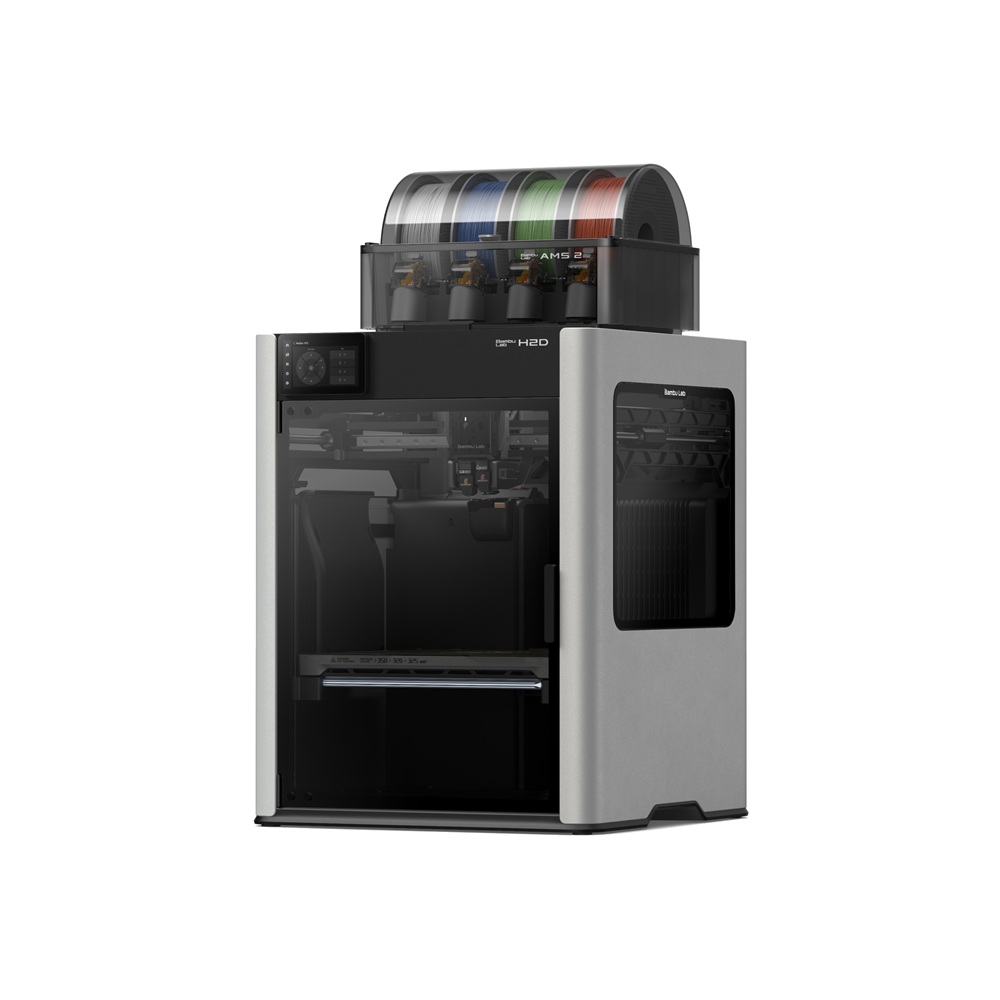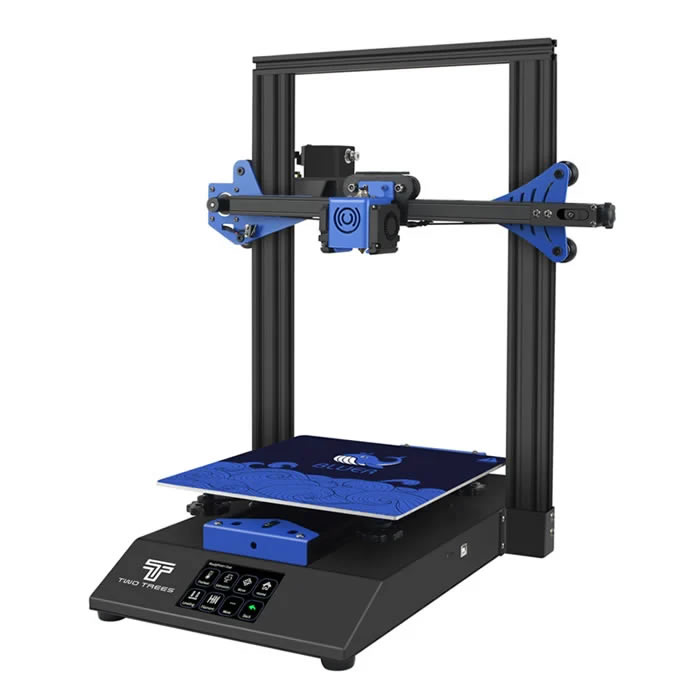Compare H2D vs Bluer
Comparison between the best 3D printers
Choose the best 3D printer at the best price. The cheapest 3D printers are here.
Buy a 3D printer here with 3D Fila.
 |
 |
|
| Model | H2D |
Bluer |
| Printing Material | Filament | Filament |
| Buy Filament for Bambu Lab H2D | Buy Filament forTwoTrees Bluer | |
| Estimated price | $1899,00 | $169,00 |
| Manufacturer | Bambu Lab | TwoTrees |
| Release Year | 2025 | 2019 |
| Print Volume [mm] | 350x320x325 | 230x230x280 |
| Printer Size [mm] | 492x514x626 | 400x410x520 |
| Weight [kg] | 42,3 | 8 |
| Power Loss Recovery | YES | YES |
| Enclosed printer | YES | NO |
| Bed Leveling | Automatic | Manual |
| Filament End Sensor | YES | YES |
| Bed type | Heated | Heated |
| Power supply system | Direct Drive | Bowden |
| Standard nozzle | 0,4 | 0,4 |
| Maximum Nozzle Temperature [°C] | 350 | 260 |
| Maximum Bed Temperature [°C] | 120 | 100 |
| Maximum printing speed [mm/s] | 600 | 200 |
| Filament holder | YES | YES |
| Camera for supervision | YES | YES |
| Recommended filaments | PLA, PETG, ABS, ASA, TPU, PVA, Nylon (PA) | PLA, PETG |
| Recommended slicers | Bambu Studio | Cura, Simplify, Slic3r |
| Maximum Resolution [mm] | 0,01 | 0,1 |
| Processor | MKS Robin Nano V1.2 + TMC2208 | |
| Display | Touchscreen 5'' | Touchscreen TFT 3,5'' |
| Power Supply | 240W | |
| Connectivity | Wifi, Bambu bus, Cartão SD | SD / USB |
| Operating systems | Windows, Mac, Linux | Windows, Mac, Linux |
| Date of registration in the system | 2025-03-31 | 2021-09-20 |
| Release date | 2025 | 2019 |
| Extra features | Bambu Labs H2D combines high-speed 3D printing with a chamber heated up to 65 °C, dual extrusion with automatic nozzle switching, an AMS for filament drying and exchange, and AI sensors that detect failures. It offers optional laser and digital cutting capabilities, features intelligent calibration through computer vision, vibration control, enhanced fire safety, and real-time camera monitoring. | The Bluer offers interesting features such as automatic bed leveling, a 3.5-inch color touchscreen for easy operation, and a filament sensor to prevent print failures. It has a robust metal extruder and a generous 230 x 230 x 280 mm print volume, suitable for a variety of projects. The community mentions improvements made by Two Trees based on feedback, increasing its reliability. |
| Support for multiple colors and materials (AMS and CFS) | YES | NO |
Notes * |
||
| Cost-benefit | 7 / 10 | 7 / 10 |
| Hardware | 8 / 10 | 2 / 10 |
| Tela | . | . |
| Print volume | 4 / 10 | 3 / 10 |
| Performance | 5 / 10 | 2 / 10 |
Conclusion |
| In comparing the Bambu Lab H2D and the TwoTrees Bluer 3D printers, several key aspects stand out that may influence a purchase decision based on individual needs and budget. The Bambu Lab H2D is a higher-end printer, featuring a larger print volume and advanced capabilities such as automatic bed leveling, dual extrusion with automatic nozzle switching, and enhanced safety features. Its maximum printing speed and resolution are significantly superior, making it an excellent choice for professional users or those requiring high-performance 3D printing. The closed design and sophisticated sensor technology offer greater reliability and versatility, supporting a wider range of filament materials. On the other hand, the TwoTrees Bluer presents a much more budget-friendly alternative, with a considerably lower price point. While it may lack some of the advanced features of the H2D, it still provides essential functionalities such as a heated bed, manual bed leveling, and a filament end sensor. The Bluer is suitable for hobbyists or beginners who seek a reliable introductory printer for casual projects. Its smaller build volume may limit some ambitious printing tasks, but it offers satisfactory performance for basic applications. Ultimately, the choice between the Bambu Lab H2D and the TwoTrees Bluer boils down to the user's requirements and budget. For users prioritizing performance, features, and larger print capabilities, the H2D is an excellent investment. In contrast, those looking for an economical solution that provides dependable and straightforward 3D printing may find the Bluer to be the ideal fit. Each printer has its respective strengths, making them suitable for different segments of the 3D printing market. |

